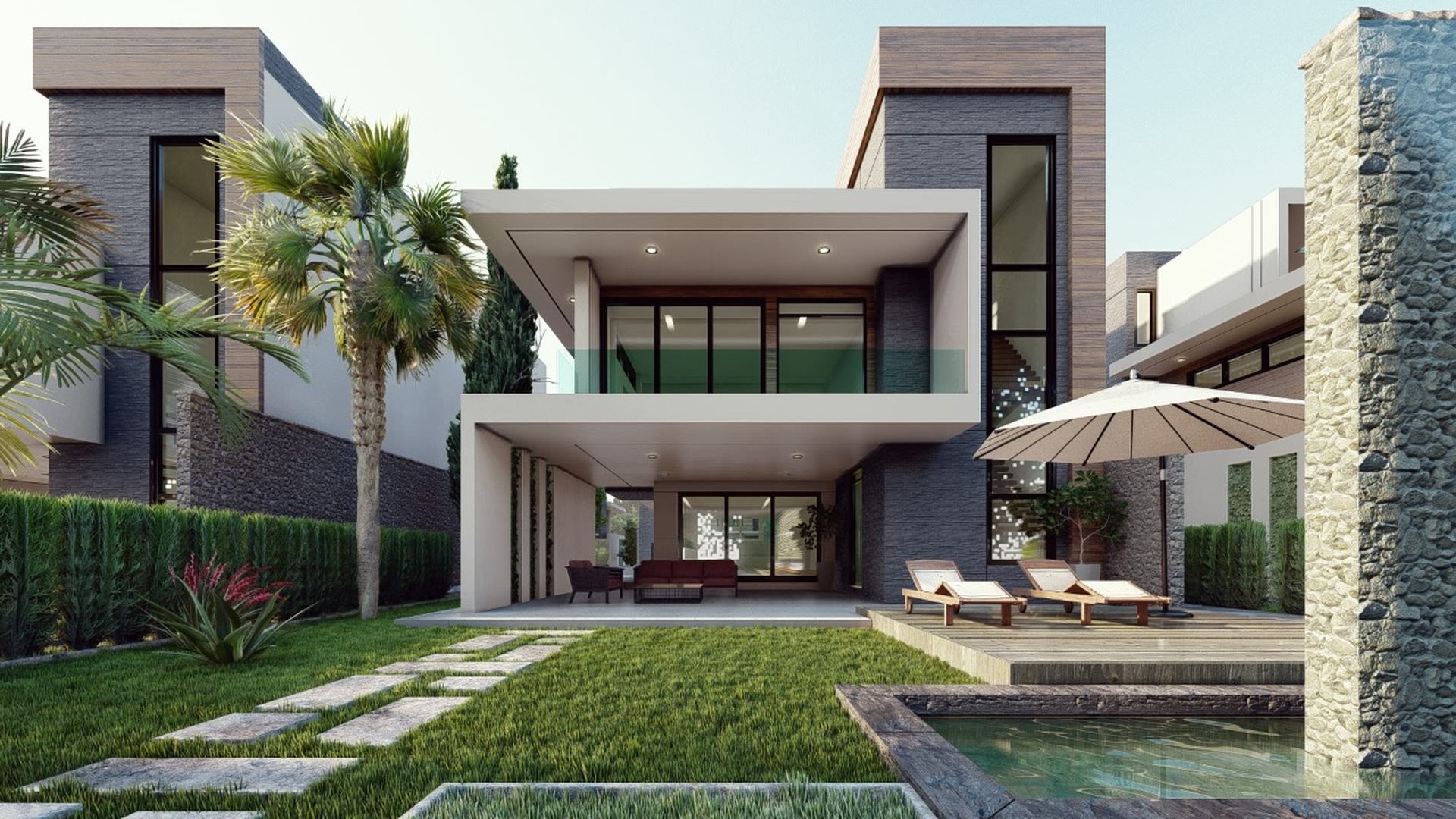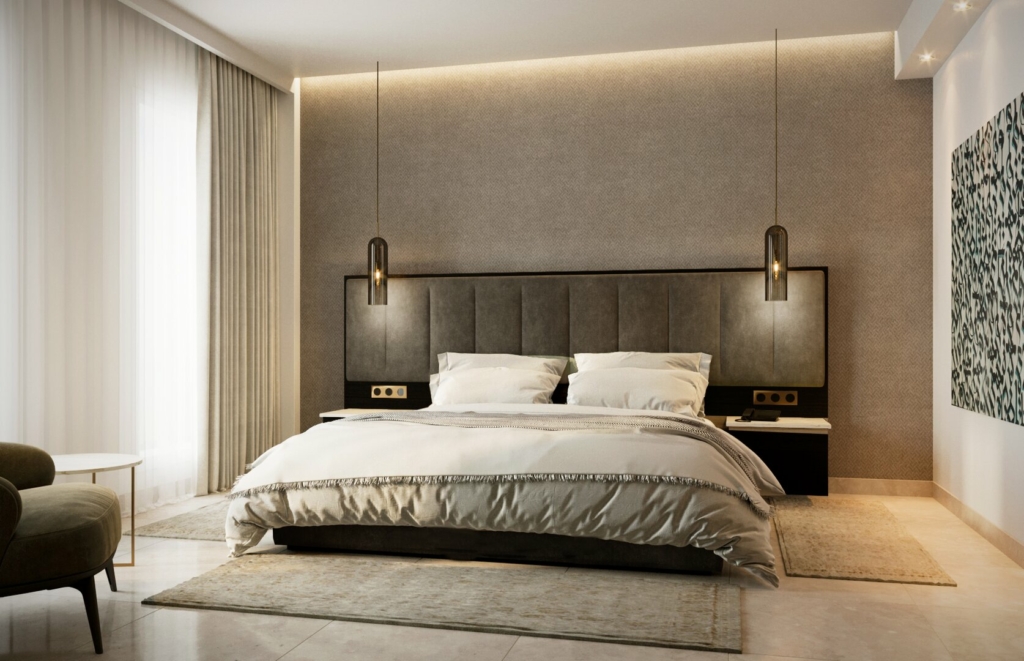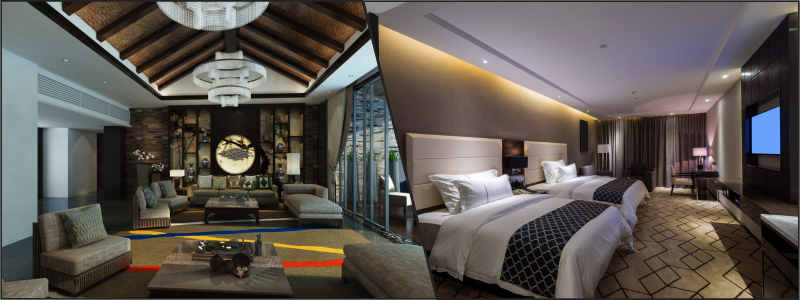The hospitality industry continues to face some serious challenges even if the world has switched back to its normal gears. While most resorts and hotels are already recouping from their losses during the COVID-19 pandemic, the competition has just gotten more ruthless. This makes it more difficult than ever for them to reach their targets. But owners who are in the know were lucky enough to survive and even thrive in this dog-eat-dog world. Where does their secret lie, then? It’s none other than virtual marketing.
The big and renowned names in the hospitality industry took advantage of 3D modeling services during the lockdowns, and now that things have picked up once again, they continue to use those enticing 3D visuals to promote their destinations, including those that are still underway. This article talks about 3D modeling for hospitality design and how it helps resorts and hotels stay afloat and capture the interest of new guests.
 Table of contents
Table of contents
RELATED: How do 3D architectural modeling services perfect the art of atmospheric renderings?
Common uses and applications of 3D modeling for hospitality design
The following are some of the most common applications and uses of 3D modeling services in the hospitality industry:
Amenities
Hotels and resorts have designated spaces for different activities, including restaurants, bars, conference halls, gyms, swimming pools, spas, and the like. 3D designers and architects should highlight both the functional and aesthetic benefits of these facilities to make their project presentations more appealing. 3D modeling services help architects turn their concepts into tangible realities by showing visitors how they can use these areas.
3D models make it possible for investors to appreciate the value of a project and convince them to sign on the dotted line. 3D renders, for example, can showcase modern equipment and other facilities in spas, pools, and gyms. They can also highlight conference halls equipped with the most state of the art audio visual facilities, flexible seating arrangements, and other important conferencing amenities.
RELATED: How 3D modeling has impacted the architecture and design industry throughout the last 30 years
Exterior
The exterior or façade of a hotel or resort is the very first thing that guests lay their eyes on. That means that making a good first impression on clients means you have to show picture-perfect images of the outdoor areas during project pitches and presentations. 3D architectural modeling firms assist architects in showcasing the façade of a hotel or resort in all its glorious beauty. They can give clients a clear view of the amazing fantastic exterior design. It is almost as if they are right there standing in front of the resort or hotel.
Photorealistic 3D models can present projects in full detail, from their materials to lighting, and colors, while also highlighting their key features. 3D renders can also allow clients to see how the exterior complements the brand image of the company and the values it upholds while appealing to potential guests.

Lobby
The lobby is often dubbed as the heart of any hospitality facility, whether it is a resort or a hotel. This area sets the tone and mode for the experiences that the guests can expect to have throughout their stay. This is why during project pitches, it is critical to carefully convey the aesthetics of a lobby. Renders can present the design of the lobby in high-definition visuals with the help of lifelike 3D models. 3D architectural rendering services help architects present the lobby’s lighting options, furniture, color schemes, materials, and overall atmosphere.
RELATED: How 3D modeling, rendering, and CAD design helps architects create sustainable construction
This way, clients will know exactly what to expect after the construction phase is completed. A modern and sleek design, for instance, can use renders showcasing a lobby with minimalist furniture, neutral colors, and clean lines. A hotel targeting guests with more traditional tastes, on the other hand, can opt to use renders that highlight the ornate details, warm colors, and vintage furniture in the lobby.
Rooms
Guests tend to spend a lot of time in their rooms. Thus, creating and designing visually appealing, functional, and comfortable rooms is important to ensure the success of a hotel down the line. 3D design professionals allow design and architectural firms to work with different room layouts that cater to the specific preferences and needs of different guests. They help highlight the décor, size, and facilities of a room with high precision. 3D modeling services also use the references, wall elevations, and floor plans of an architect in their renders to accurately depict the furniture of a room following its dimensions in real life.
3D renders also allow designers and architects to convey the comfort and beauty of a room with the help of realistic 3D models. This gives viewers a better insight into the quality of fixtures and furnishings and any other aspects of the décor in the interiors of a room. They also show different lighting choices to help designs pick what best suits a room and come up with a space that guests will surely love and enjoy. They also allow investors to see the rooms in the best light possible so they can get their design plans up and running in no time.
RELATED: How to find the right architectural 3D visualization expert for your company or firm?
Surroundings
3D models give stakeholders a good idea of how the architecture of a hotel or resort blends with its environment. They present the vistas guests will see across various vantage points, proximity to tourist spots in the area, greenery, and so much more. 3D architectural visualization services can also help designers and architects display hotels and resorts throughout different climates, years, and times of the day. They showcase the versatility and functionality of a hotel or resort to help clients understand its full potential in generating income all year round.
Benefits of 3D modeling for hospitality design
Although there’s no question that traditional photography continues to be of great value, it can only do so much as capture what exists in real life. However, it often has logistical and weather constraints. On the other hand, 3D modeling paints with pixels and light.

Here are some of the benefits of 3D modeling for hospitality design:
1. Cost-effective investment
3D rendering offers a more cost-effective solution than the expense and logical complexities of professional photo shoots. After building the digital model, it’s possible to efficiently create variations in lighting, angles, and scenes to maximize return on investment. To make things better, the construction of a resort or hotel doesn’t even have to be completed. Provided that architectural design plans are in place, 3D artists can bring them to life using modern 3D rendering and modeling technology.
RELATED: Leading home design & modeling 3D technology for builders, companies, and firms
2. Create perfect moments
Picture this: the sunrise bathes an oceanfront villa in golden colors, casting a shimmering reflection on the pool. 3D modeling services help showcase flawless staged scenes, ideal weather conditions, and facilities that are still under construction to give guests a good glimpse of what to expect during their stay in the future.
3. Highlight uniqueness
Generic photographs tend to blend into the background, while 3D modeling lets you highlight the distinctive features of a hotel or resort. These unique features could be an enticing aqua park promising adventure and laughter, a lavish spa tucked in a tropical rainforest, or an amazing rooftop bar with scenic views of the city. 3D models let you highlight everything that sets a resort or hotel apart from others of its kind. Putting the spotlight on these unique features will lure more guests and help reach business goals.
4. Tell a story
Since 3D scenes are not just mere static images, these can also be woven into more captivating narratives. Think of a couple having a cozy romantic dinner during sunset on the beach, a group of friends sipping cocktails at the bar, or kids enjoying a good laugh while splashing in the pool. With 3D architectural animation services these vignettes can spark all sorts of emotions, creating a connection that lets prospective guests see themselves experiencing the magic of the space.
RELATED: How to use 3D architectural design as visual storytelling
5. Unleash architectural prowess
It’s important to showcase all the intricate details of the design of a hotel or resort. 3D modeling services can emphasize the lobby’s grandeur, the room’s intimate charm, or the lovely expanse of the pool all with artistic flair and on-the-spot accuracy.
Benefits of 3D modeling services for developers, investors, and owners
3D modeling for hospitality design is not just a mere tool for marketing as it also provides benefits for all stakeholders in the chain.
Developers
Secure funds and attract more investors by presenting the vision with enticing 3D presentations from architectural presentation designers of a proposed hotel or resort. Envision amenities even before they are constructed and refine the layouts to ensure guest satisfaction and maximize the existing space.
RELATED: How has architectural visualization changed the way companies present projects

Investors
Get a clearer picture of the potential return on investment of a hotel or resort. 3D models let you estimate guest capacity, virtually test different pricing models, and evaluate the effect of different designs on revenue.
Owners
Virtually test layouts, traffic flow, and furniture arrangements before the construction starts to optimize operational efficiency. Pinpoint possible bottlenecks and make the necessary adjustments to cut down operational costs and boost guest experience.
How Cad Crowd can help
Contact Cad Crowd to dive into the world of 3D modeling services in the hospitality industry to help you showcase the space and paint a picture of dreams that are soon to turn into reality one pixel at a time! Contact us for a free quote today.
